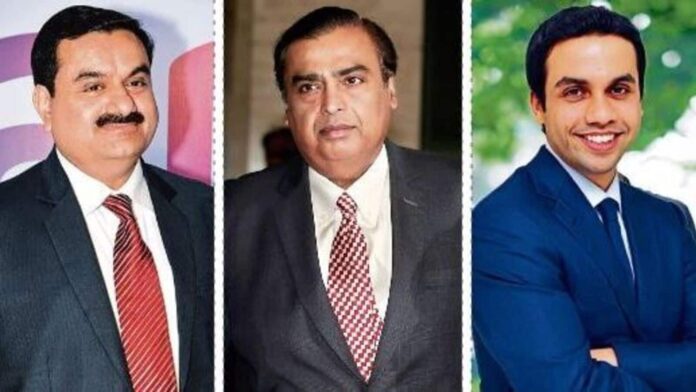Succession planning as a best practice has evolved and matured in Indian family businesses in recent years. However, challenges remain, particularly when a leader with a strong personality and personal brand steps down.
The latest succession plan announced by the Adani-led group should be viewed in this context. The phenomenal rise of 62-year-old Gautam Adani over the past 10 years, his apparent closeness to Prime Minister Narendra Modi, comparisons of wealth with billionaire Mukesh Ambani of Reliance Industries Ltd, and his group’s comeback after the damning Hindenburg report have all created a strong brand personality.
At Reliance, about a year ago, Ambani’s three children—Isha, Akash, and Anant—were appointed to the board as non-executive directors. Prior to that, leadership of the conglomerate’s retail business had been given to Isha, telecom to Akash, and the new green energy business to Anant.
Their weddings have been celebrated with much fanfare, focusing the nation’s spotlight on them. Additionally, the group has cultivated a strong personality around Nita Ambani, a philanthropist, businesswoman and Ambani’s spouse.
But despite the Reliance group’s advanced succession planning, the 67-year-old Mukesh Ambani maintains an almost cult-like image, much like his father, Dhirubhai Ambani, both in India and globally.
In the case of the 127-year-old Godrej family business, succession planning was implemented through an amicable division of the group in May this year.
The Godrej Industries Group, which includes seven companies, will be controlled by Nadir Godrej, Adi Godrej, and their families. The Godrej Enterprises Group, comprising four companies along with their subsidiaries and joint ventures, will be controlled by Jamshyd Godrej, Nyrika Holkar, and their families.
In the undivided group, the soft-spoken Adi Godrej, now 82, played a key role for many years with his unique brand of moral leadership.
All these examples are textbook cases of good succession planning. However, they both contain potential traps that could undermine the good intentions of the exercise due to the strong personalities of the group patriarchs.
Globally, succession planning has raised continued questions and doubts about the future of Berkshire Hathaway, which has been led by the legendary 93-year-old Warren Buffet since 1965. Similar doubts were raised at Apple Inc. when the iconic founder Steve Jobs died of pancreatic cancer at the age of 56. Fortunately, both companies have continued to do well, bolstered by the iconic reputations of Buffet and Jobs.
In the Indian context, when Ratan Tata retired in 2012 after a 22-year tenure as group chairman, the $150 billion Tata Group appointed Cyrus Mistry as chairman of Tata Sons. Ratan Tata had acquired a reputation as a change master, getting rid of the deadwood accumulated under his predecessor J.R.D. Tata and creating a strong culture of values and efficiency.
While Mistry’s appointment was seen as good succession planning, he was forced out after just four years in a boardroom coup. Mistry’s mistake was bringing in his own people and, more importantly, trying to change the culture of the Tata Group.
After Mistry stepped down, N. Chandrasekaran was appointed group chairman. He maintained the culture of the legacy Tata Group that Ratan Tata had cultivated and has brought stability and growth during his seven years of leadership.
Take another example of the $19.4 billion Mahindra and Mahindra group. As executive chairman, Anand Mahindra built an enviable reputation, leading the group to new heights. He has acquired iconic status, and his social media posts have made him one of the most popular business leaders in the country.
In 2021, Anish Shah took over as chief executive and managing director, becoming the first non-family professional leader in the group. During this short period, it is evident that succession in M&M has worked even after Anand Mahindra stepped down.
The lesson from the succession planning in both the Tata and Mahindra groups is that when a business group has an iconic leader stepping down, the merits of the succession exercise alone are not enough. It needs at least two other ingredients: cultural stability and professionalization.
The Ambani and Adani groups could do well to keep that in mind.
Also read |Godrej family’s division strategy: A model for amicable business succession
#Avoiding #patriarch #trap #Lessons #succession #planning #Adani #Ambani
